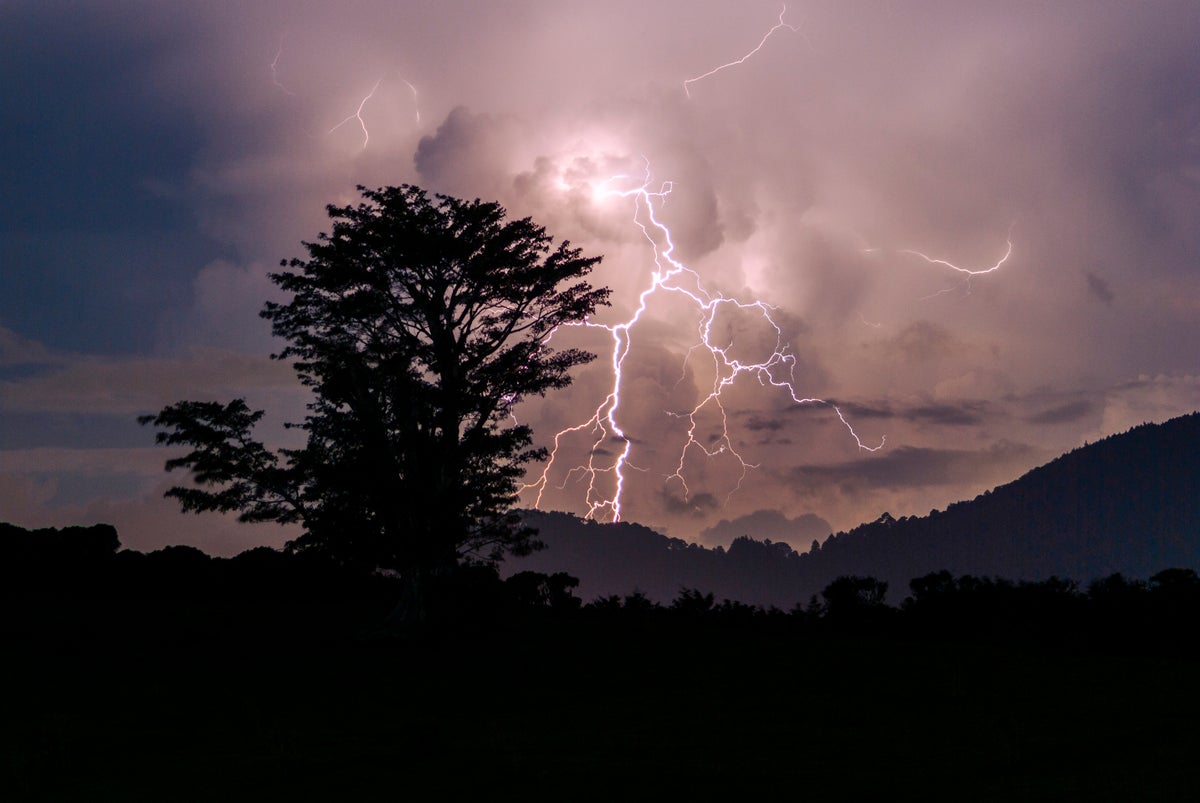Why These Tropical Trees Love a Lightning Strike
One species of tropical tree seems not only to survive lightning strikes but also to thrive because of them
Join Our Community of Science Lovers!
Being struck by lightning is something humans generally try to avoid. But for at least one tropical tree species, this doesn’t hurt—and might even be a good thing.
To find out, he and his colleagues spent several years following the fate of 93 trees from various species in the rainforest of central Panama when they were directly struck by lightning. Nine were from a species known as the almendro (Dipteryx oleifera), a forest giant native to Central and South America that can grow up to 165 feet tall. After the trees were struck, the researchers continued to monitor the ones that survived the shock, checking their overall condition and noting whether the lightning killed neighboring trees and any parasitic vines growing on them.
If you’re enjoying this article, consider supporting our award-winning journalism by subscribing. By purchasing a subscription you are helping to ensure the future of impactful stories about the discoveries and ideas shaping our world today.
The results showed that the almendro trees were very resistant to lightning and minimally damaged compared with almost all the other tree species, which were severely damaged—64 percent of the latter trees died within two years of being struck. A few other large species also survived the strikes and might have benefitted as well, but lightning had not struck enough of these species for the researchers to be certain.
Many of the trees that had surrounded the almendros—competing with the species for water and nutrients—were killed by lightning that spread through their branches after it hit the D. oleifera trees. This left more resources and space for the latter. Lightning strikes on the almendros also reduced the average number of parasitic vines on a tree by 78 percent, by killing them. These vines climb on top of the trees to “steal” light.
A Dipteryx oleifera tree just after being struck by lightning in 2019 (top) versus two years later (bottom). The tree survived the strike with minimal damage, and benefited from having its parasitic vines and competing neighbors removed by the strike.
Equipped with data on lightning strike frequency and the trees’ survival rates after reaching a certain size, the team used computers models to estimate that a typical almendro is likely struck by lightning about five times during its 300-year lifespan. Then, by running simulations using data on details such as how the trees grow and reproduce, the researchers showed that lightning strikes seem to be almost a necessity for the trees. Without the benefits the strikes bring, “they would not live as long,” Gora says.
The researchers also speculate that the almendro might have evolved to attract lightning—or at least not to avoid it, as most other trees have. D. oleifera’s wide crown and tall height, which enhance its chance of being hit, make it a living lightning rod. And it might resist damage by being more electrically conductive than other tree species around it. Gora thinks similar abilities to benefit from lightning might be widespread across other species and types of forests.
Gennaro Tomma is a freelance journalist who covers science, with a focus on the natural world, biodiversity, conservation, climate change, environmental and science-related policies, and more. His work has appeared in the New York Times, Science, National Geographic, New Scientist and other outlets. Find more on his website: https://gennarotomma.it
Source: www.scientificamerican.com
